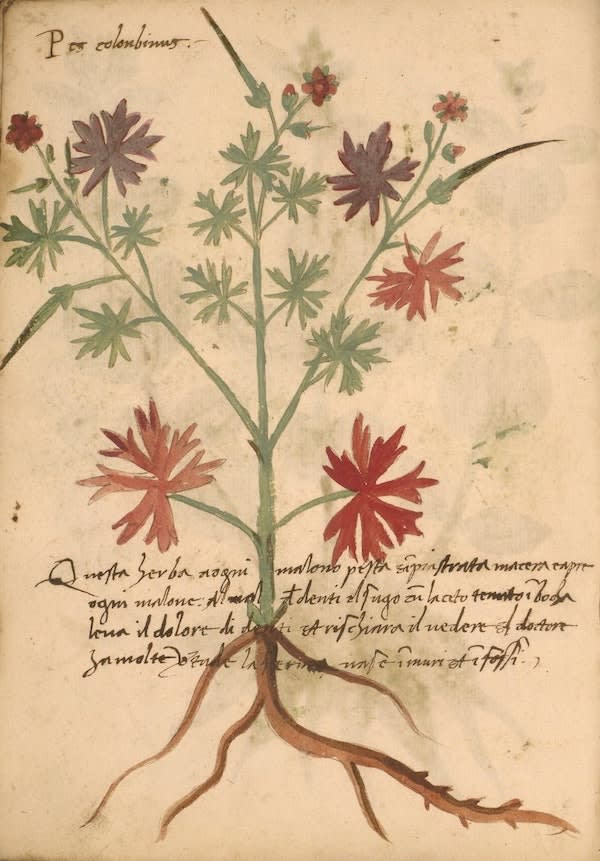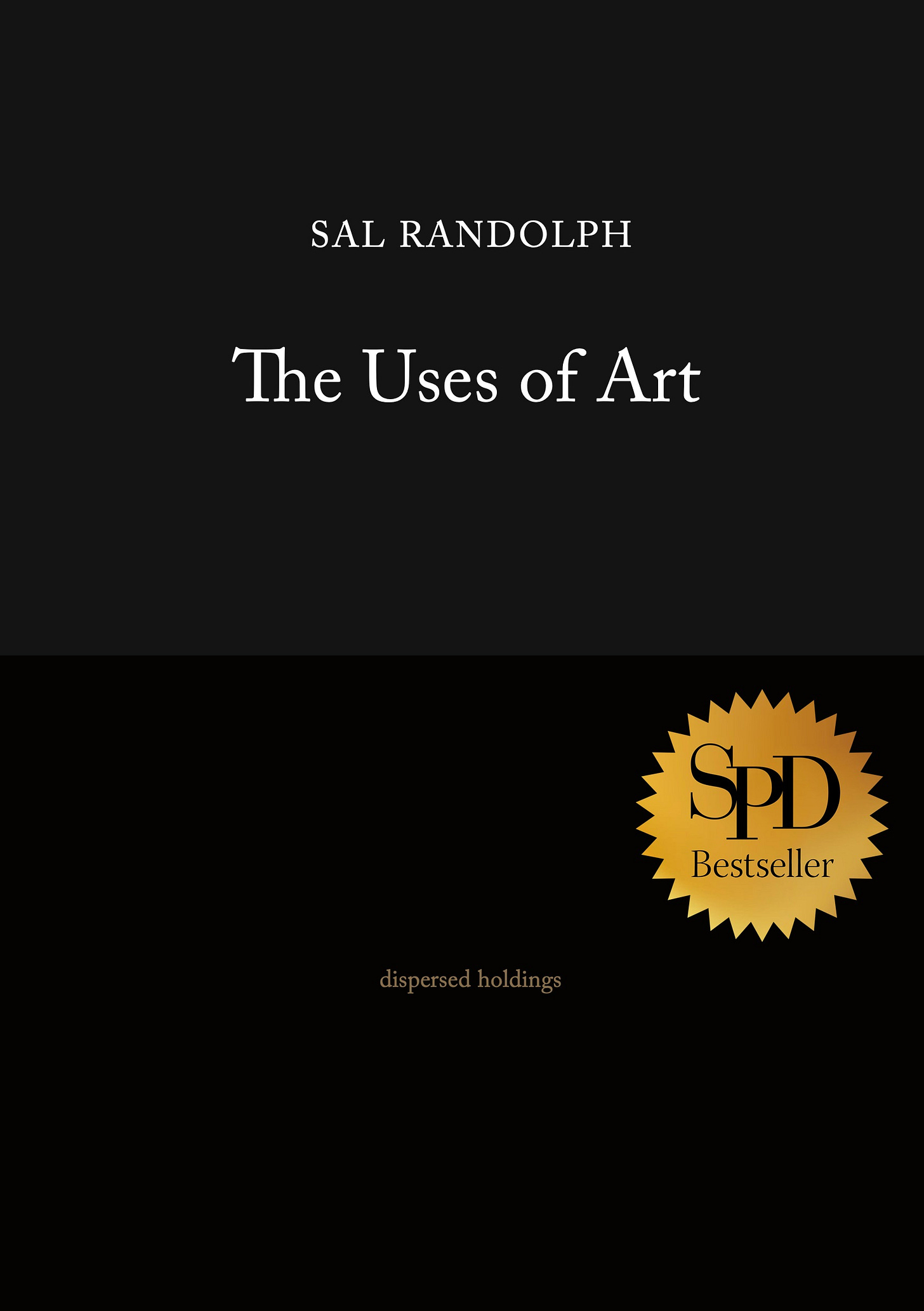
Dear Friends,
What would it be like to see your body, your whole self, as a kind of sensor? I don’t mean something mechanical or electronic, but instead something delicate, alive to the world, full of the capacity for feeling? What if we saw attention not just as a capacity of the conscious mind and cognitive thought, but instead as an expression of the whole body?
I recently encountered the work of anthropologist, photographer, and dancer Natasha Myers. Her remarkable project, Becoming Sensor (a collaboration with filmmaker and dancer Ayelen Liberona), experimented with a new approach to ecological understanding, at once rooted and kinetic. Working outside the grid of ordinary scientific knowledge, in collaboration with traditional indigenous knowledge-keepers, Myers and Liberona fused walking, dance, photography, and filmmaking to create a kinesthetic form of attention.
— Sal
Becoming Sensor

Becoming Sensor is the work of anthropologist Natasha Myers and filmmaker Ayelen Liberona. It is an experimental ecological exploration of the 10,000-year-old black oak savannah in Toronto’s High Park, making use of artistic practices of kinesthetic imaging and kinesthetic listening.
As Myers tells the story:
Becoming Sensor is a collaboration with my dear friend Ayelen Liberona. We have been friends since we were 11 and 12 years old when we were training at the same dance school here in Toronto, and we share a resonant aesthetic and sensibility. We were already thinking together about movement and image-making—I was thinking about movement, plants, and the settler sciences; she was rethinking the relationship between cameras, movement, and land. We began this collaboration walking the land together, listening and experimenting, using a whole range of movement-based modalities that became protocols for what we call an “ungrid-able” ecology, an ecology that cannot be mapped and enclosed by a grid logic (see Myers 2017). We introduced movement into the image-making by holding open the aperture of our cameras to allow our moving bodies to register energetically in the image.
The writings below are excerpts from Myers’s and Liberona’s statements on the Becoming Sensor website:
Kinesthesthetic Attunement
If traditional nature photography captures living bodies and turns them into objects of aesthetic and scientific interest, these kinesthetic images gesture to a different kind of account of the living world. These images are attunements. They are generated in the act of moving with and being moved by the beings and doings of a black oak savannah. As relational images they document the energetics of an encounter, the push and pull between bodies. Rather than capturing phenomena, these images make it clear that it is the photographer who is caught: captivated, they are the ones who hitch a ride on what is becoming and coming undone. The rotting logs, frilled mushrooms, crumbling leaves, ancient sands, and greening grasses are not discrete things, they are happenings taking shape through deep time and in the ephemeral moments of now, and now, and now. It is the photographer who must learn how to keep pace with these rhythms through their body.
Trees as Dancers
Trees are remarkable dancers. You just have to slow down your sense of time to keep pace with the rush of their agile, moving bodies. Plants and trees move by growing. And they grow by lapping up sunlight and pulling matter out of thin air. As they grow, they literally make the world, thickening their trunks, branches, stems, and leaves as they inhale gaseous carbon and exhale oxygen. In this way, trees teach us the most nuanced lessons about mattering. Trees grow from million-fold “centres of indetermination” (cf Deleuze). As they grow, they explore the world around them, conducting inquiries, experiments, and catalyzing new ecological relations. They record their worldly experiences in their forms. You can get a feel for the remarkable history of a tree’s encounters with insects, animals, wind, fire, and chainsaws by taking the time to trace its gesture. Winter trees, and trees whose spring buds have yet to burst make it easy to follow along. Trace a tree’s silhouette, it’s sweeping curves, arcing limbs, or meandering branches by pulling a pencil across a page, or by moving your own body. Let yourself be moved by its form.
Exercise: Kinesthesia
Kinesthesia is the internal perception of body movements. Though our kinesthetic experience often falls below the threshold of consciousness, we can bring it to more vivid awareness with a simple intention or suggestion. We can also feel an empathetic or sympathetic kinesthesia when we watch others move, especially in sports or dance.
This exercise brings this specifically kinesthetic attention to the experience of works of art.
As with all of these “Ways of Seeing,” the initiating impulse is to expand our possibilities for engaging with works of art and deepening attention. These exercises are perfect for time spent in museums, galleries, and studios. You can also bring them into the rest of your life and experiment with streets, libraries, parties, landscapes. Try them as writing or art-making prompts.
These practices work best if you give them some time, at least twenty minutes or a half-hour. This is easier to do if you set a timer.
As always, interpret these instructions freely and intuitively
Experience:
Place yourself in relation to a work of art. Let your mind and body come to stillness in preparation..
Begin by noticing any motion the work suggests. Become aware of the speed, tempo, and energy of the movements. Give your attention to their particular qualities: are they delicate, forceful, jagged, playful? Let your attention be choreographed by the work.
As you look, allow your own body become involved. If you are in a situation where you can move freely, your body can dance or gesture in conversation with the work. If your movements are constrained by the situation, dance in imagination instead. Follow the work’s movements, or act in counterpoint.
What can you learn about the work and yourself through this kinesthetic attention?Response:
Record your dance (physical or imaginary) in whatever way seems most accurate and intimate. Take notes, freewrite, make gestural drawings, or hold your camera in your hand as you move.
Share your results and reflections in the comments. I’d love to hear from you.
More Information
“Becoming Sensor in the Planthroposcene: An Interview with Natasha Myers.” by Meredith Evans, Fieldsights, July 9, 2020.
adanceaday — Natasha Myers’s gestural drawings and recordings of daily movement practice.
Instagram: becoming sensor
Instagram: planthroposcenes
The title Ways of Seeing is an homage to the continuing inspiration of the BBC TV series and book by John Berger.
Further adventures and new ways of seeing can be found in my book, The Uses of Art.
Artist Sal Randolph’s THE USES OF ART is a memoir of transformative encounters with works of art, inviting readers into new methods of looking that are both liberating and emboldening.
Dazzlingly original, ferociously intelligent.
— Michael Cunningham
A joyful, dazzling treasure-box of a book.
— Bonnie Friedman
Here’s a guide, to waking up, over and over again.
— Roshi Pat Enkyo O’Hara






"Trees are remarkable dancers": what a great line!
I love coming across something that immediately expands my consciousness or my perception. I've been playing with embodiment stuff for a while, but the idea of slowing down time enough to see tree movements as DANCE made my heart happy. Thank you @Sal.